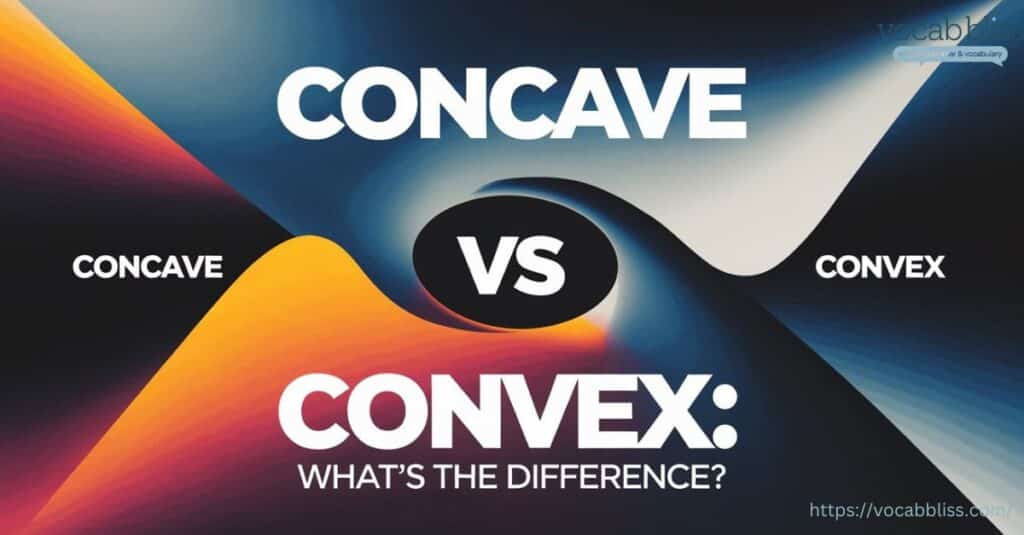Understanding the difference between concave vs convex shapes is vital across various fields, from geometry and optics to everyday objects. These terms describe curves, surfaces, and structures with distinct properties that influence how light, light rays, or objects interact with them. This article provides an in-depth guide, exploring definitions, applications, and examples to help you grasp the concept of concave and convex shapes in both theoretical and practical contexts.
Quick Summary
Understanding the difference between concave vs convex shapes is essential in fields like optics, geometry, and everyday applications. Concave refers to shapes or surfaces that curve inward, resembling a hollow or a cave, while convex describes shapes that bulge outward. These terms apply to lenses, mirrors, and polygons, influencing how light behaves, how images are formed, and how objects appear. For example, convex lenses focus light to a point, making them ideal for magnifying glasses, while concave mirrors concentrate light for telescopes and headlights. Grasping these distinctions not only simplifies geometry but also enhances practical understanding in design, technology, and science.
Discover more: Vicious vs Viscous: How to Use Them Correctly in Writing
Understanding Concave vs Convex
“Understanding the concepts of concave versus convex functions requires breaking them down into their fundamental properties. To begin with, it is essential to explore how these properties manifest in different contexts. Moreover, recognizing their differences helps in applying them effectively across various mathematical and real-world scenarios.”These terms describe the curvature of surfaces, shapes, or graphs, determining whether they bend inward or outward. Let’s dive into these concepts with visuals, analogies, and real-world examples to clarify their meanings.
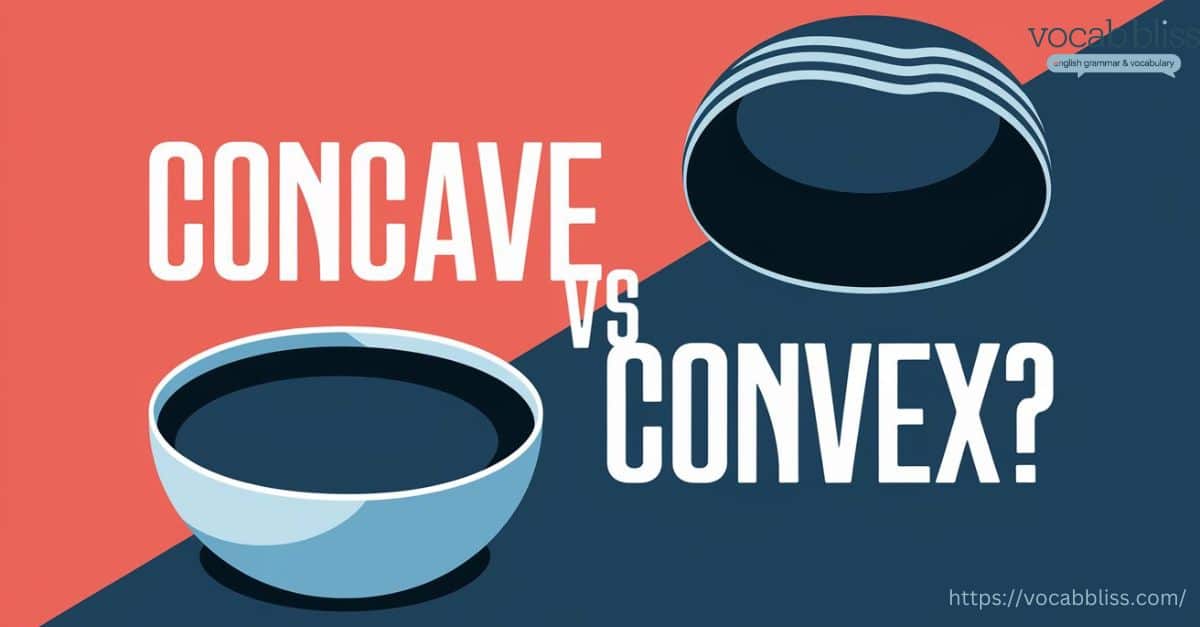
The Fundamental Concepts
- Concave: Think of a spoon’s inner surface or a satellite dish. Concave shapes curve inward, creating a hollow or cave-like appearance. Light or objects interacting with a concave surface tend to converge or focus inward.
- Convex: Picture a dome or the back of a spoon. Convex shapes curve outward, resembling a bulge or protrusion. Light or objects interacting with a convex surface typically diverge or scatter outward.
Visualizing concave vs convex
A helpful way to understand the difference between convex vs concave function is through the following visual analogy:
- Concave: Imagine a bowl turned upside down. The inside surface you see is concave—curving inward to hold or collect something.
- Convex: Now, turn the bowl upright. The outside surface is convex—bulging outward, dispersing what it encounters.
Real-world Examples:
| Object | Concave Surface | Convex Surface |
|---|---|---|
| Spoon | Inner side | Outer side |
| Mirror | Shaving/makeup mirror | Vehicle side mirror |
| Lens | Diverging lens | Magnifying glass lens |
| Architecture | Inside of a dome | Outside of a dome |
Real-World Analogies
- Satellite Dishes: The inward curve of a satellite dish is concave, designed to focus signals at a single point for better reception.
- Car Mirrors: Rearview mirrors are convex, giving drivers a wider field of view by dispersing reflected light.
Contexts in Geometry and Optics
In geometry, the distinction between concave and convex surfaces extends to polygons, functions, and 3D shapes. For example:
- A triangle is a convex polygon because all its interior angles are less than 180°.
- A star-shaped figure is a concave polygon because at least one angle “dents inward.”
In optics, concave lenses are used in eyeglasses to correct nearsightedness by diverging light, while convex lenses converge light to magnify images in telescopes or microscopes.
Definition of Convex Functions
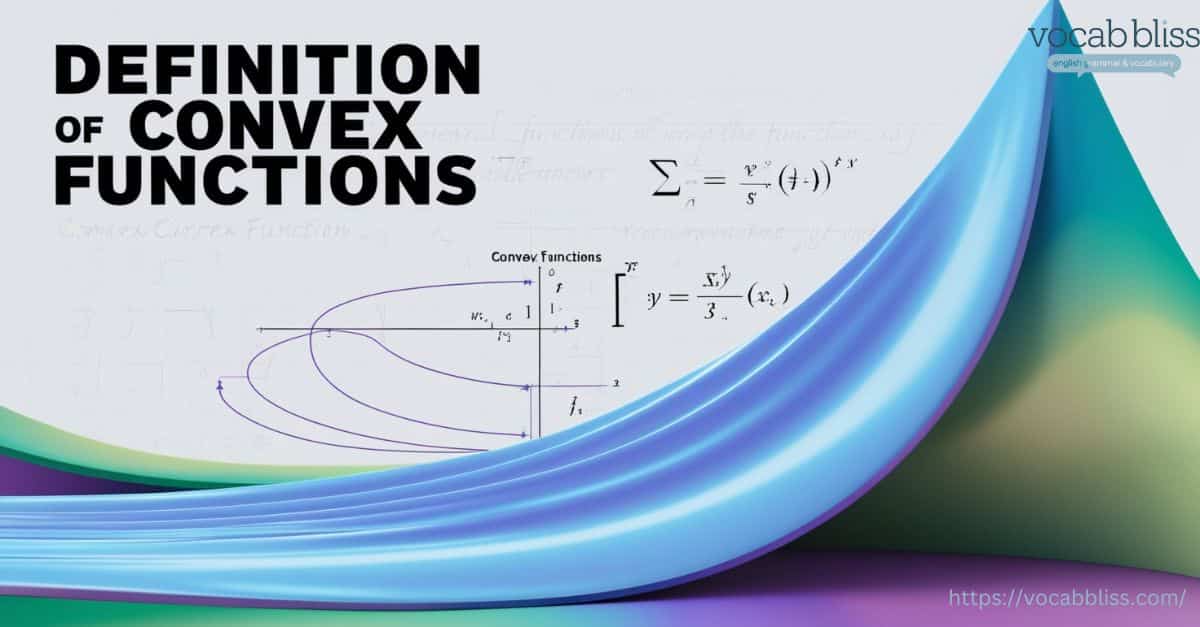
In mathematics, convex functions are those where the line segment connecting any two points on the graph lies above or on the curve. Specifically, this characteristic reflects the essence of convexity—an “upward bending” shape. Convex functions play a crucial role in various fields such as optimization, economics, and machine learning, where their predictable properties simplify complex computations.
Key Mathematical Definition
A function f(x)f(x) is convex if, for any two points x1x_1 and x2x_2 within its domain and any λ\lambda where 0≤λ≤10 \leq \lambda \leq 1: f(λx1+(1−λ)x2)≤λf(x1)+(1−λ)f(x2)f(\lambda x_1 + (1-\lambda)x_2) \leq \lambda f(x_1) + (1-\lambda)f(x_2)
“As a result, this inequality guarantees that the curve never dips below the line segment connecting two points on the graph.”
Examples of Convex Functions
Real-World Examples
- Quadratic Equations:
The function f(x)=x2f(x) = x^2 is a classic convex function. Its graph forms a parabola that opens upwards, exemplifying convexity. - Economic Cost Models:
In economics, cost functions like total production cost are often convex. For example, the cost C(x)=ax2+bx+cC(x) = ax^2 + bx + c grows at an increasing rate as production scales, reflecting the convex nature of operational expenses. - Distance and Energy Models:
In physics and logistics, convex functions like f(x)=xf(x) = \sqrt{x} describe energy or distance relationships, as the effort required increases progressively over time.
Practical Applications
- Optimization Problems: Convex functions are the backbone of convex optimization, where global solutions are guaranteed to be optimal due to the absence of local minima.
- Design and Engineering: Convex functions ensure stability and predictability in architectural designs and mechanical systems, particularly in minimizing material stress.
Graphical Representation of Convex Functions
The graphical representation of a convex function is an upward-curving graph. This shape indicates that the slope of the function either increases or remains constant as xx increases.
Key Visual Examples
- Parabola: The function f(x)=x2f(x) = x^2 produces a curve that opens upward.
- Exponential Growth: Functions like f(x)=exf(x) = e^x also exhibit convexity, curving upwards as xx grows.
Diagram Illustration (Example):
| Function | Graph Characteristics |
|---|---|
| f(x)=x2f(x) = x^2 | Parabola opening upward |
| f(x)=exf(x) = e^x | Exponential growth curve bending up |
| f(x)=x3+2×2+x+1f(x) = x^3 + 2x^2 + x + 1 | Nonlinear yet globally convex |
Features of Convex Functions Using Graph
Convex functions are defined by their unique properties. Consequently, they are predictable and efficient for mathematical and practical applications.
Key Properties
- Global Minimum:
A convex function has a single global minimum, making it particularly useful in optimization problems. - Linear Combination:
A linear combination of convex functions is also convex. For instance, if f(x)f(x) and g(x)g(x) are convex, then h(x)=af(x)+bg(x)h(x) = af(x) + bg(x) (where a,b≥0a, b \geq 0) is convex. - Second Derivative Test:
A twice-differentiable function f(x)f(x) is convex if its second derivative f′′(x)≥0f”(x) \geq 0 for all xx in its domain. This property helps confirm convexity mathematically.
Applications in Real Life
- Data Interpolation: Convex functions are used in curve fitting to create smooth transitions between data points in machine learning and statistics.
- Machine Learning: Loss functions like mean squared error (MSE) are convex, simplifying the optimization process during training.
Understanding convex functions is essential for both theoretical mathematics and real-world problem-solving. Their properties ensure reliability in optimization, engineering, and computational models. As a result, they have become a cornerstone of applied mathematics..
Definition of Concave Functions
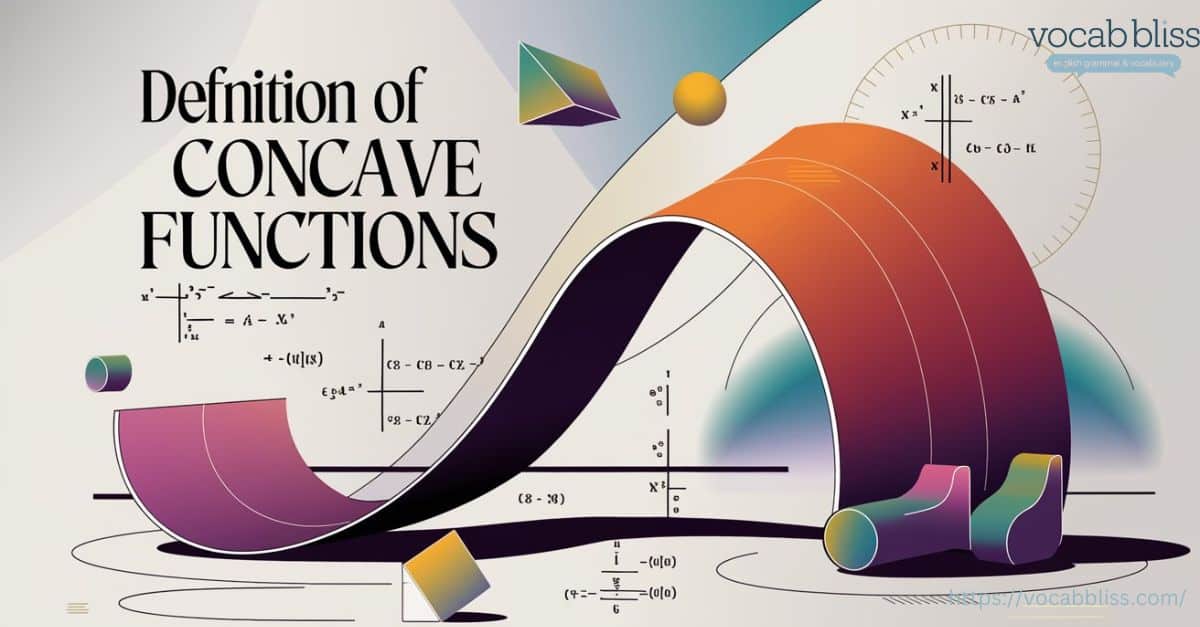
A concave function is one where the line segment connecting any two points on the graph lies below or on the curve. In other words, this downward curvature reflects the defining property of concavity. Concave functions appear frequently in fields such as economics, probability, and engineering, where diminishing returns, benefit models, or resource constraints play a role.
Key Mathematical Definition
A function f(x)f(x) is concave if, for any two points x1x_1 and x2x_2 in its domain and any λ\lambda where 0≤λ≤10 \leq \lambda \leq 1: f(λx1+(1−λ)x2)≥λf(x1)+(1−λ)f(x2)f(\lambda x_1 + (1-\lambda)x_2) \geq \lambda f(x_1) + (1-\lambda)f(x_2)
This inequality ensures that the curve bends downward between two points, never rising above the connecting line segment.
Examples of Concave Functions
Mathematical Examples
- Logarithmic Functions:
The function f(x)=ln(x)f(x) = \ln(x) is a classic concave function, bending downward as xx increases. It captures the concept of diminishing returns, where the incremental gain decreases over time. - Negative Quadratics:
The function f(x)=−x2f(x) = -x^2 produces a downward-opening parabola, exemplifying concavity. This type of function is often used to model scenarios where a maximum value exists, such as profit or utility maximization.
Real-World Contexts
- Economic Benefit Models:
Functions like U(x)=ln(x)U(x) = \ln(x) represent utility functions in economics, where additional wealth provides diminishing satisfaction. - Probability Density Functions:
Many distributions, such as the normal distribution, have concave segments, where probabilities peak and then taper off symmetrically.
Practical Applications
- Risk Analysis: Concave utility functions model risk aversion in decision-making processes.
- Resource Allocation: Diminishing returns in productivity, investment, or consumption are modeled using concave functions.
Graphical Representation of Concave Functions
Graphs of concave functions curve downward, indicating a gradual decrease in growth or benefit as the input increases.
Key Visual Examples
- Logarithmic Growth: f(x)=ln(x)f(x) = \ln(x), where growth slows as xx increases.
- Negative Parabola: f(x)=−x2f(x) = -x^2, where the graph peaks at a maximum point and bends downward symmetrically.
Diagram Illustration
| Function | Graph Characteristics |
|---|---|
| f(x)=ln(x)f(x) = \ln(x) | Logarithmic curve bending downward |
| f(x)=−x2f(x) = -x^2 | Downward-opening parabola |
| f(x)=−exf(x) = -e^x | Exponential decay curve |
Features of Concave Functions Using Graph
Concave functions exhibit unique properties that make them essential for modeling real-world phenomena, especially in economics and engineering.
Key Characteristics
- Global Maximum:
Concave functions often have a single global maximum, making them ideal for analyzing peak performance scenarios like profit maximization. - Jensen’s Inequality:
A fundamental property of concave functions, Jensen’s inequality states that for a concave function ff, f(E[x])≥E[f(x)]f(E[x]) \geq E[f(x)], which is critical in statistics and probability theory. - Second Derivative Test:
A twice-differentiable function f(x)f(x) is concave if its second derivative f′′(x)≤0f”(x) \leq 0 for all xx in its domain.
Applications in Real Life
- Economics:
- Consumer Behavior: Utility functions model diminishing returns in consumer satisfaction.
- Investment: Cost-benefit analyses use concave functions to predict diminishing profits.
- Structural Engineering:
Concave shapes are used to distribute loads efficiently in arches and domes, ensuring stability under pressure. - Machine Learning:
In data science, concave functions like the log-likelihood are maximized to improve prediction models.
Understanding concave functions helps us model systems where resources are finite, returns diminish, or probabilities peak. Their versatility makes them indispensable in both theoretical studies and practical applications.
Concave vs Convex Lenses
Lenses play a crucial role in optics, redirecting and focusing light for various applications. concave vs convex lenses are the two primary types, distinguished by their shape and how they manipulate light. Each has unique properties and applications in fields such as vision correction, magnification, and imaging systems.
Definition and Key Differences concave vs convex
| Property | Convex Lens | Concave Lens |
|---|---|---|
| Shape | Bulges outward (thicker in the center) | Curves inward (thinner in the center) |
| Light Direction | Converges (focuses light) | Diverges (spreads light) |
| Focal Point | Has a real focal point | Has a virtual focal point |
| Image Formation | Can create real and inverted images | Always forms virtual, upright images |
Convex Lenses
A convex lens bulges outward and is also known as a converging lens because it focuses incoming light rays to a single point, the focal point.
Applications of Convex Lenses
- Vision Correction:
Convex lenses are used to correct hyperopia (farsightedness), where the eye cannot focus on nearby objects. - Magnification:
Devices like magnifying glasses and microscopes rely on convex lenses to enlarge small objects. - Imaging Systems:
Convex lenses are integral to cameras, telescopes, and projectors, focusing light to form clear, sharp images. - Burning Glass:
Convex lenses concentrate sunlight to a focal point, generating enough heat to ignite materials, demonstrating their power to focus energy.
Concave Lenses
A concave lens curves inward and is called a diverging lens because it spreads out incoming light rays, making them appear to originate from a virtual focal point.
Applications of Concave Lenses
- Vision Correction:
Concave lenses correct myopia (nearsightedness), where the eye cannot focus on distant objects. - Binoculars and Telescopes:
Concave lenses are used in optical systems to adjust and expand the field of view. - Laser Technology:
In laser setups, concave lenses expand light beams to ensure even distribution or broader coverage. - Virtual Reality Headsets:
Concave lenses help project light at comfortable viewing angles, enhancing the immersive experience.
Key Differences in Light Behavior
| Lens Type | Behavior of Light Rays | Focal Point | Image Characteristics |
|---|---|---|---|
| Convex | Light converges | Real, on the same side as the light | Real/inverted or virtual/upright |
| Concave | Light diverges | Virtual, on the opposite side | Always virtual and upright |
Practical Uses in Everyday Life
- Convex Lenses: Found in reading glasses, magnifiers, and cameras, offering clarity and precision in vision and image capture.
- Concave Lenses: Essential for myopia correction, scientific instruments, and VR systems, enabling broader and more accurate visualization.
Concave vs Convex Mirrors
Mirrors are reflective surfaces that redirect light. However, concave vs convex mirrors differ in shape, how they interact with light, and their applications. Therefore, understanding these differences helps explain their roles in diverse fields like safety, astronomy, and design.
Light Interaction: Concave vs Convex Mirrors
| Property | Concave Mirror | Convex Mirror |
|---|---|---|
| Shape | Curves inward, like a bowl | Curves outward, like the back of a spoon |
| Light Behavior | Converges light to a focal point | Diverges light, spreading it outward |
| Image Formation | Real or virtual, depending on object position | Always forms a virtual, diminished image |
| Focal Point | Real focal point | Virtual focal point (behind the mirror) |
Concave Mirrors
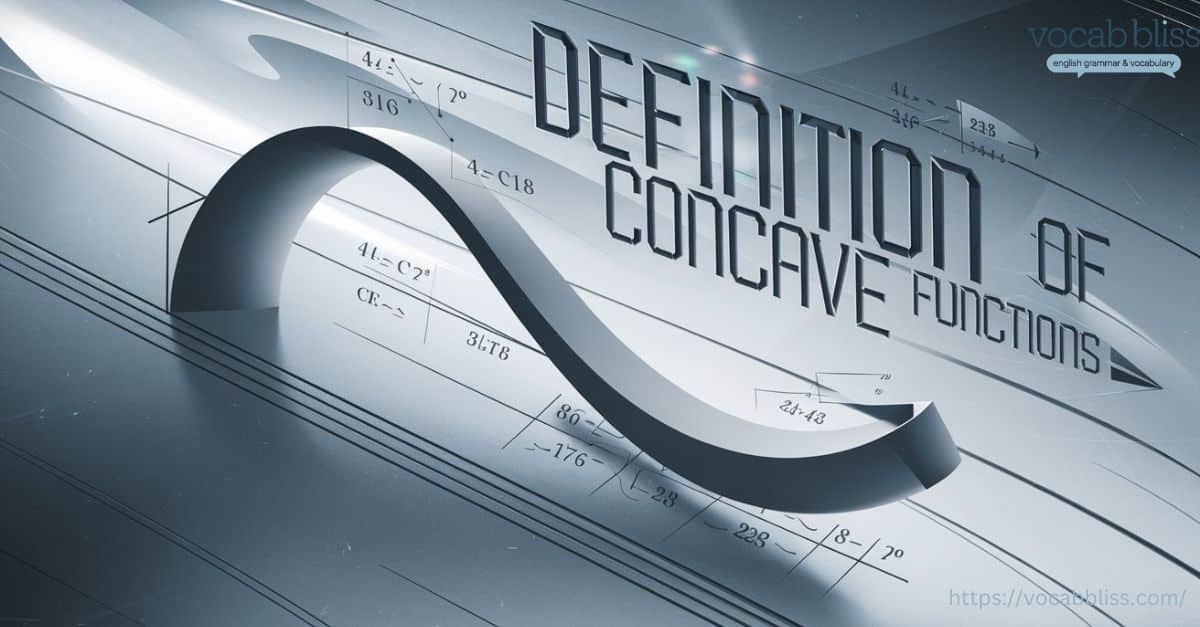
A concave mirror curves inward and reflects light rays to a single point, known as the focal point. As a result, concave mirrors are highly effective for focusing light.
Applications of Concave Mirrors
- Telescopes:
Concave mirrors are used in reflecting telescopes to collect and focus distant starlight, enabling detailed observation of celestial objects. - Shaving and Makeup Mirrors:
Their ability to produce magnified images makes concave mirrors ideal for close-up tasks like shaving or applying makeup. - Headlights and Flashlights:
Concave mirrors focus light into a beam, increasing brightness and directionality in automobile headlights and flashlights. - Solar Concentrators:
Concave mirrors concentrate sunlight onto a single point, generating intense heat for solar power systems or cooking applications.
Convex Mirrors
A convex mirror bulges outward, and as a result, it reflects light in a way that spreads it outward. Because of this characteristic, it provides a wide field of view, making convex mirrors especially useful for purposes such as safety and monitoring.
Applications of Convex Mirrors
- Vehicle Rearview and Side Mirrors:
Convex mirrors give drivers a wider field of view, reducing blind spots and increasing road safety. - Security and Surveillance:
These mirrors are common in stores, warehouses, and public spaces, where a wide-angle view helps monitor activity. - Street Corners and Parking Garages:
Convex mirrors improve visibility around sharp corners, preventing accidents. - Decorative and Architectural Design:
Convex mirrors add aesthetic appeal and create unique perspectives in interior designs and art installations.
Key Differences: Light Behavior
| Mirror Type | Behavior of Light Rays | Image Characteristics |
|---|---|---|
| Concave | Light converges to a focal point | Real/inverted (if far from mirror) or virtual/upright (if close) |
| Convex | Light diverges outward | Always virtual, upright, and smaller than the object |
Everyday Use Cases
- Concave Mirrors: Found in telescopes, flashlights, and beauty tools, they excel at magnification and focusing light.
- Convex Mirrors: Essential for safety, surveillance, and traffic management, offering broader visibility and reducing hazards.
Concave vs Convex Polygons
In geometry, polygons can also be classified as convex vs concave function:
- Concave polygon: At least one interior angle is greater than 180°. Example: Star-shaped polygons.
- Convex polygon: All interior angles are less than 180°. Example: Triangles and rectangles.
| Property | Concave Polygon | Convex Polygon |
|---|---|---|
| Interior angles | At least one > 180° | All < 180° |
| Edges | May “dent inward” | Always outward-facing |
| Examples | Star shapes, arrows | Squares, hexagons |
Where Do the Words “convex vs concave” Come From?
The terms originate from Latin:
- Concave: Derived from “concavus,” meaning “hollowed out.”
- Convex: Comes from “convexus,” meaning “arched.”
These roots explain their respective meanings: one describes an inward hollow, the other an outward bulge.
How to Use Concave vs Convex
Understanding proper usage of concave versus convex terms is essential.
Examples of Concave and Convex in Sentences
- “The concave lens corrected my vision by diverging the light rays.”
- “The convex mirror provided a wide-angle view behind my car.”
Side-by-Side Comparison of convex vs concave
| Feature | Concave | Convex |
|---|---|---|
| Curve direction | Inward | Outward |
| Focus | Diverges light | Converges light |
| Optical examples | Concave lenses/mirrors | Convex lenses/mirrors |
| Polygon examples | Star-shaped polygons | Triangles, squares |
Everyday Usage Examples
- Concave surfaces: Satellite dishes, makeup mirrors, and spoon interiors.
- Convex surfaces: Dome-shaped roofs, car windshields, and ball exteriors.
FAQs: Convex vs. Concave
Which term describes a lens with a surface that curves outward like the exterior of a sphere?
A convex lens, which bulges outward to focus light.
What is the difference between concave and convex?
Convex curves outward, while concave curves inward, like a bowl.
What is convex and concave?
Convex means outward bulge; concave means inward curve.
Difference between concave lens and convex lens?
Convex lenses focus light to a point, while concave lenses scatter it.
Difference between concave and convex lens class 7?
Convex lenses bring light together, and concave lenses spread it apart.
Conclusion
The difference between concave vs convex curve shapes extends beyond geometry and optics and even reaches into everyday life. For example, from how we design lenses to understanding the curvature of polygons, recognizing these terms’ roles significantly enhances our grasp of light, surfaces, and geometric properties. Ultimately, mastering this distinction not only ensures better decisions in design, engineering, but also in problem-solving.
Expand Your Knowledge:
- Is it Heel vs Heal: Grasping the Difference?
- How Do You Spell Christmas, Christmases, or Christmas’s?
- Analogy vs Allegory: What’s the Difference?
- Is it Latter or Ladder: How to Use?

Jorge Phillips is an experienced blogger who writes for Vocab Bliss, sharing his passion for the English language. With a knack for simplifying complex grammar rules and a focus on commonly confused words, Jorge helps readers navigate the nuances of English with ease. His insights aim to make learning engaging and practical.

